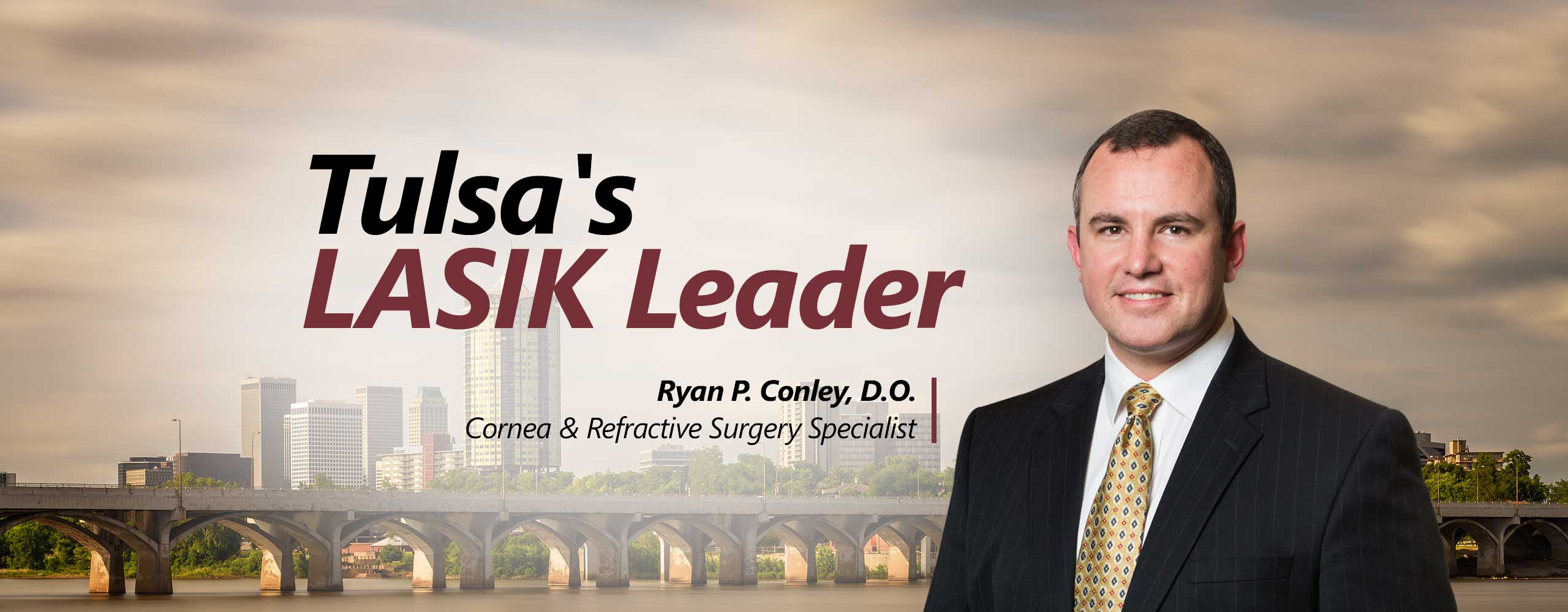
Cornea Refractive Surgery
Advanced CustomVue LASIK
Developed to make the LASIK laser eye surgery procedure even more effective, wavefront allows for a complete, personalized measurement of a patient’s entire visual system, including the eye’s shape, lens shape, corneal shape, depth of the eye and the most accurate identification possible of anatomic anomalies that could cause vision conditions such as impaired night vision or the presence of halos. After each eye is evaluated, the computer designs a personalized LASIK surgical plan for the patient, and the surgeon loads that plan directly into the computer of our VISX Star 4 laser.
LASIK Vision Correction
Triad Eye Institute is proud to offer next generation LASIK vision correction procedures.
LASIK vision correction at Triad Eye Institute is an all-laser, blade-free approach to vision correction. With Triad Eye’s next generation laser technology, a cornea flap is made using an ultra-fast, femtosecond laser. Then an excimer laser is used to correct the vision to the patient’s unique specifications. This high level of customization provides for a more comfortable patient experience and optimal visual outcomes.
LASEK
Laser assisted subepithelial keratectomy (LASEK) is a laser surgical procedure for the correction of refractive error. LASEK is specifically used to correct astigmatism, hyperopia (farsightedness), and myopia (nearsightedness). It is a “hybrid” technique between laser assisted in situ keratomileusis (LASIK) and photorefractive keratectomy (PRK).
Epi-LASIK
Triad Eye Institute offers a variety of cornea refractive procedures to help you achieve the best vision possible.
Epi-LASIK is a version of LASIK surgery designed to correct some of the potential problems patients may experience with LASIK, iLASIK and LASEK. Epi-LASIK is basically a hybrid of all three, but there are some key differences.
PRK Vision Correction
First introduced in the 1980s, Photorefractive Keratectomy (PRK) is the original laser vision correction procedure.
To perform PRK surgery, the laser eye surgeon first removes the thin cornea covering, known as the epithelium. He then reshapes the cornea using the VISX Star 4 laser. The epithelium regenerates in just under a week. PRK entails some short-term, mild pain, but the outcomes are the same as LASIK laser eye surgery. Vision is usually not the clearest at first, but does improve by the end of the week.
Meet Dr. Conley
Ryan P. Conley, D.O. is fellowship-trained and board-certified ophthalmologist specializing in corneal transplant procedures at Triad Eye Institute.
He also performs LASIK blade-free vision correction, LenSx laser-assisted cataract surgery and refractive lens implant surgeries.
Dr. Conley is a member of the American Academy of Ophthalmology, American Osteopathic College of Ophthalmology Otolaryngology Head and Neck Surgery, American Society of Cataract and Refractive Surgery, American Osteopathic Association, and Oklahoma Osteopathic Association.


